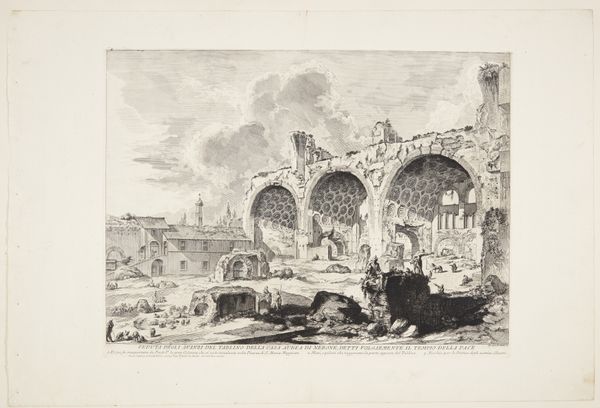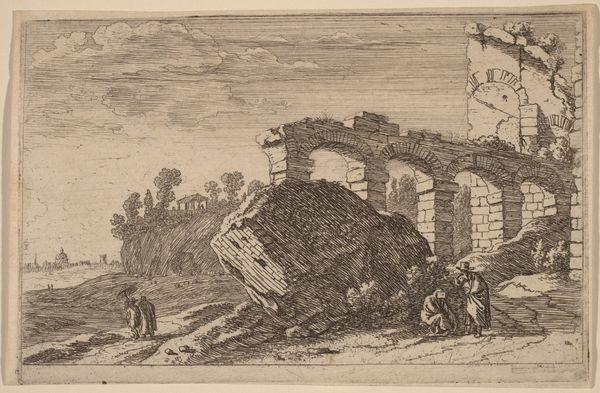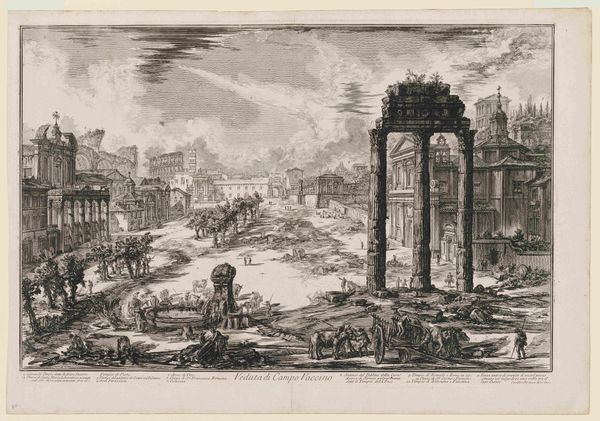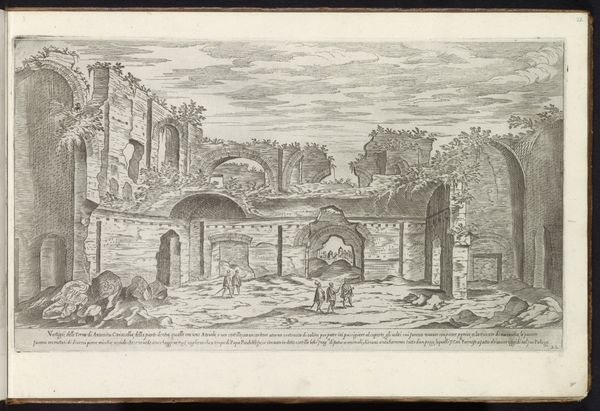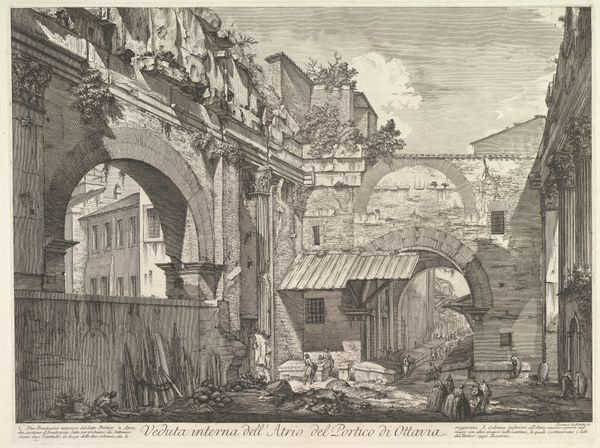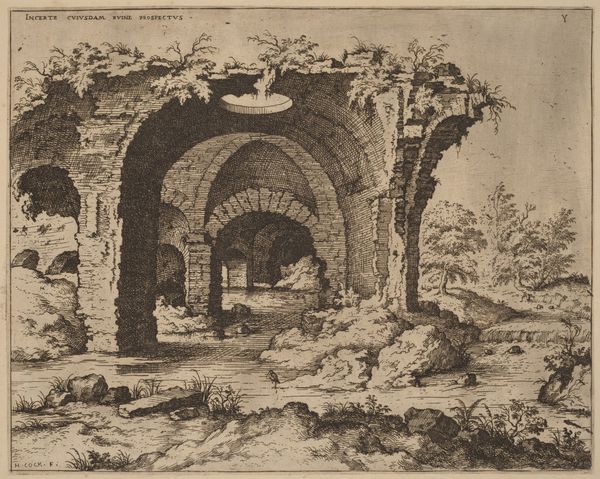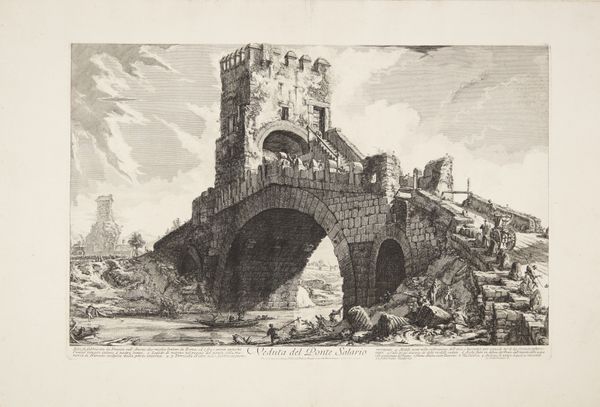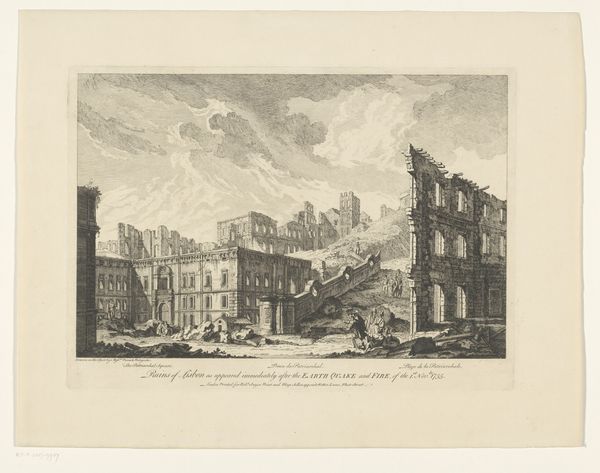
The Basilica of Constantine (Veduta degli avanzi della Casa aurea di Nerone, detti volgarmente il Tempio della Pace 1752 - 1762
0:00
0:00
drawing, print, etching, engraving, architecture
#
drawing
#
neoclacissism
#
medieval
# print
#
etching
#
landscape
#
romanesque
#
cityscape
#
history-painting
#
italian-renaissance
#
engraving
#
architecture
Copyright: Public Domain
Editor: This is Giovanni Battista Piranesi’s "The Basilica of Constantine," created between 1752 and 1762. It’s an etching, so black lines on white paper showing an architectural ruin. It feels dramatic, almost staged, with those figures in the foreground amidst such grandiose decay. What jumps out to you? Curator: It’s interesting that you perceive it as staged. I see Piranesi as engaging in a visual debate about the power of the classical past in 18th-century Italy. How are these ruins being presented and interpreted by Piranesi? And for whom? Editor: I suppose, staging in the sense that Piranesi chose this angle, focused on these ruins. It’s a deliberate framing, right? Were these kinds of views popular back then? Curator: Precisely. These prints served as souvenirs for Grand Tourists, wealthy Europeans on educational journeys. They perpetuated a specific narrative about Rome, emphasizing its glorious past while also subtly commenting on its present state, or its decline and the subsequent rise of christian Rome over it. Does Piranesi offer an uncritical view of the past, or is he more complex? Editor: I see what you mean. There's a contrast, right? The idealized structure versus its dilapidated reality makes a strong point. A lot of historical eras clash, too. Like, roman arches right next to later building. He's making a statement about historical periods clashing right? Curator: Absolutely. Piranesi is prompting viewers to question what constitutes "progress" and how the past informs the present. How does art itself play a part in constructing this historical understanding, for good or ill? Editor: Wow, I had no idea it was so multi-layered. It seems it does much more than picture architecture. Curator: Indeed, it questions how history itself is constructed. Editor: So cool, I learned a lot!
Comments
No comments
Be the first to comment and join the conversation on the ultimate creative platform.
